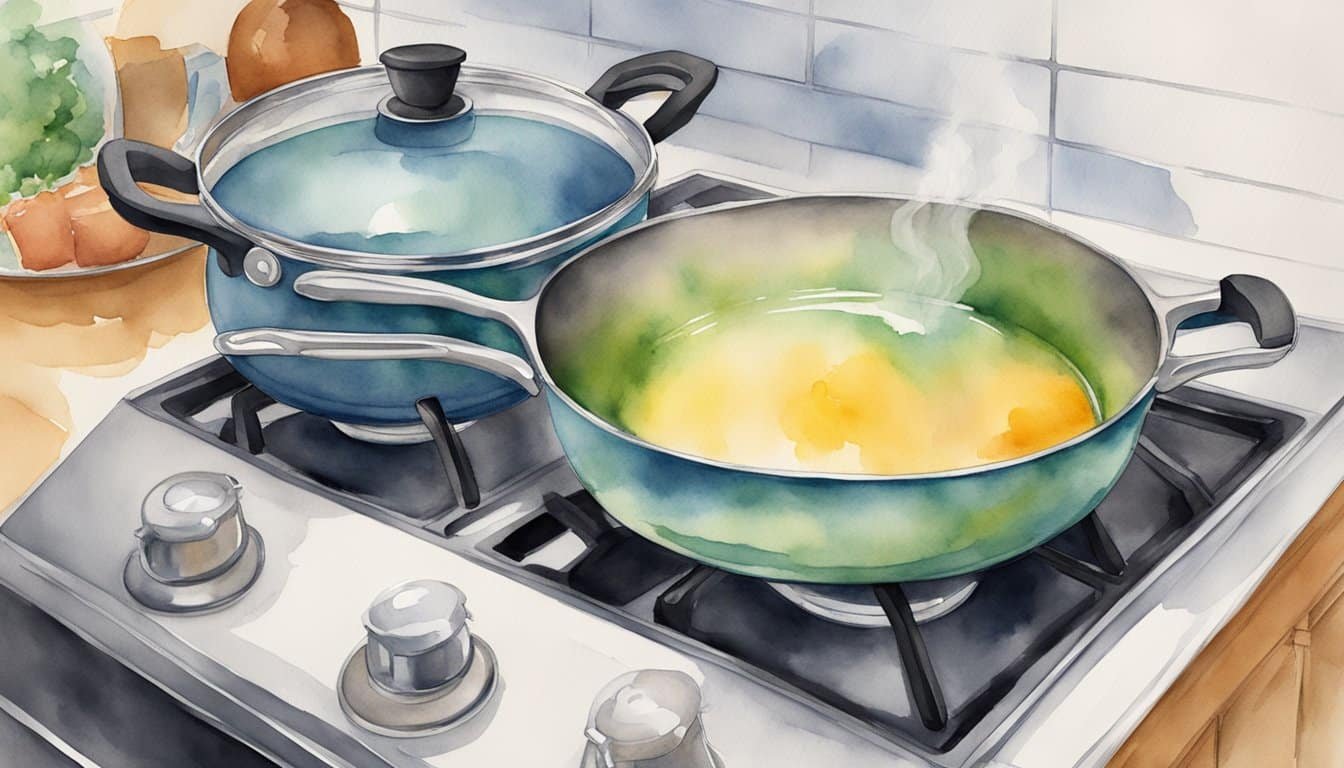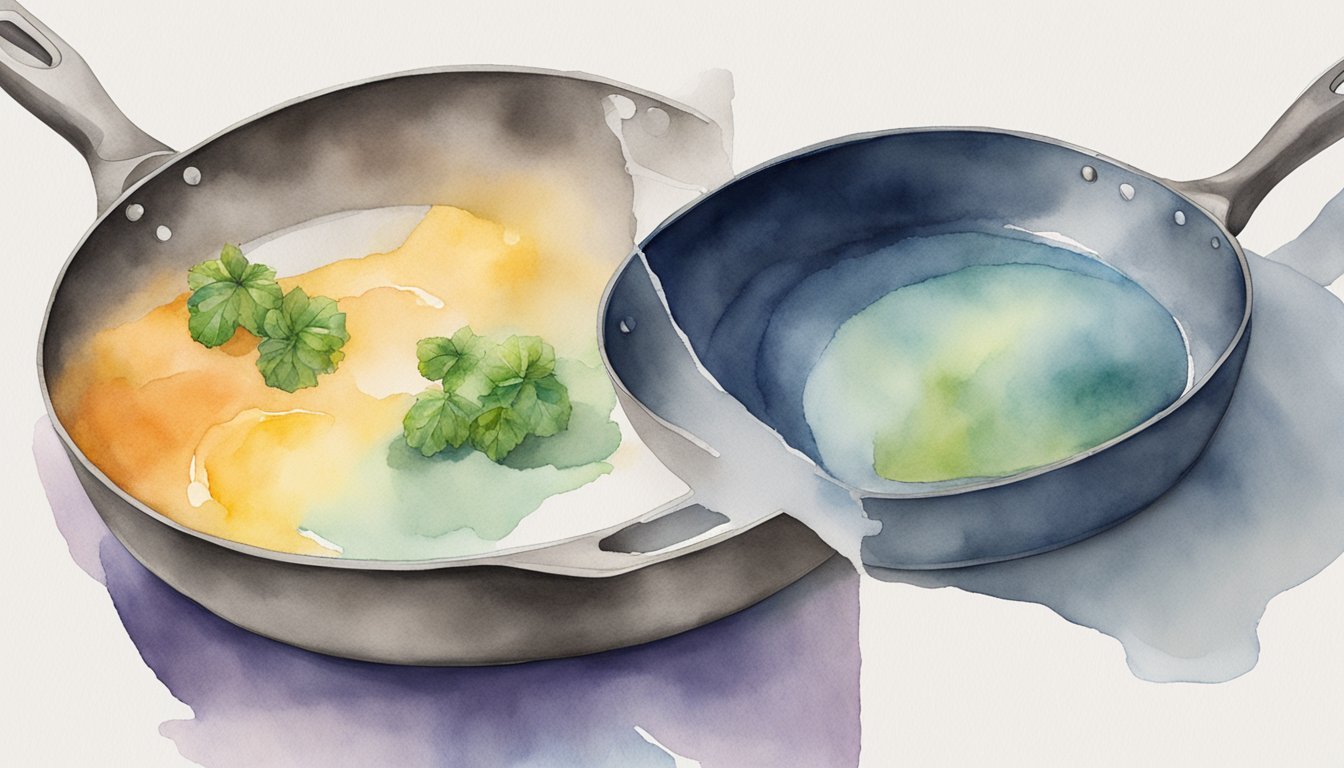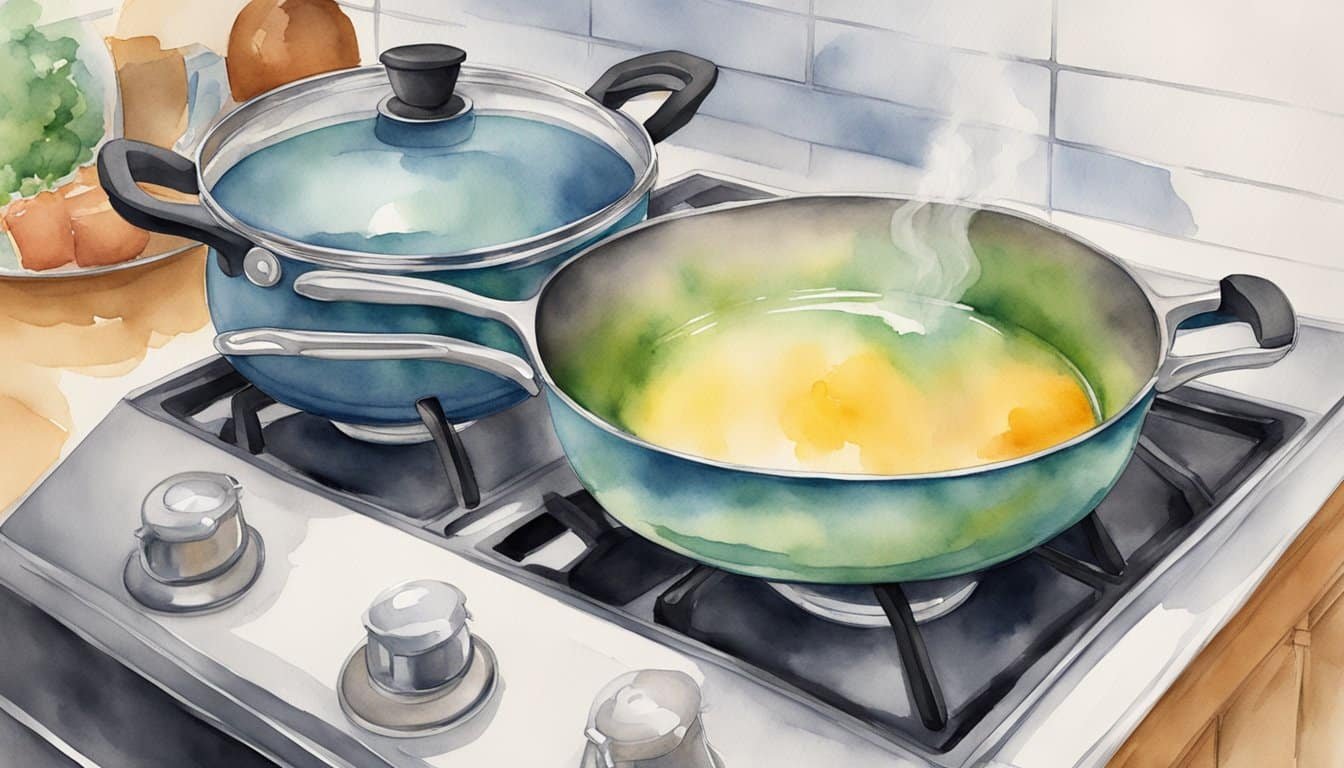Overview of Nonstick Coatings
Nonstick coatings have transformed the way people cook, offering ease of use and requiring less oil. They have a fascinating history and are composed of innovative materials.
History and Development
Nonstick coatings have evolved since their accidental discovery in 1938. Dr. Roy Plunkett was working on refrigerant gases when he stumbled upon polytetrafluoroethylene (PTFE), which later became known as Teflon, a name synonymous with nonstick surfaces. These coatings have been improving kitchenware ever since, offering a low-friction cooking surface that resists sticking and withstands high temperatures.
Material Composition
The primary material in nonstick coatings is PTFE, also known generically as Teflon. It’s a type of fluoropolymer that has long carbon chains bonded to fluorine atoms, resulting in a slick, non-reactive surface. Concerns over perfluorooctanoic acid (PFOA), once used in manufacturing nonstick coatings, have led to the development of PFOA-free options, enhancing safety without sacrificing functionality.
Benefits of Nonstick Cookware
Nonstick cookware provides several practical advantages. It requires less cooking oil, promoting healthier eating habits by reducing fat intake. Cleanup is simplified, as food releases easily from the surface without the need for scrubbing. Moreover, the uniform heat distribution of nonstick surfaces helps to cook food evenly, resulting in better-tasting dishes.
Using Nonstick Cookware

Nonstick pans have revolutionized how food is cooked, allowing for easy release of food from the pan and low-fat cooking due to less oil required. Proper usage and care can prolong their life and maintain their nonstick properties.
Cooking with Nonstick Pans
Heating nonstick pans slowly and avoiding high temperatures are essential for preserving the coating. It’s normally advised to use slow heating when cooking, as high heat can damage the nonstick surface. For even heat distribution, it’s recommended to select pans that are suitable for one’s stove type—whether it’s gas, electric, or induction.
In cooking with these pans, minimal oil or fats are needed as the surface is designed to prevent food from sticking. It’s a practice that not only contributes to lower-fat meals but also to an easier cleanup.
Care and Maintenance
To extend the life of nonstick cookware, certain maintenance steps are necessary:
- Avoid Metal Utensils: Metal can scratch and chip the nonstick coating. Instead, opt for wood, silicone, or plastic tools.
- Cleaning: Gentle cleaning with soap and water is recommended. Abrasive cleaners or scrub pads can deteriorate the nonstick face.
- Storage: Stack pans with a layer of protection, like a cloth or paper, to avoid scratches when not in use.
Following these guidelines not only keeps the cookware in good shape but also ensures consistent performance over time.
Health and Safety Considerations
There have been health concerns related to nonstick coatings, particularly when they are overheated. Toxic fumes can be released from the coating if a pan is heated above a certain temperature; thus, it’s safe to cook over low to medium heat. A perspective on toxicity concerns shows that the coating might start damaging after a certain period, which underscores the importance of following manufacturer recommendations and replacing pans as needed.
Users should also be aware of the durability of commercial nonstick coatings, as their effectiveness can diminish after repeated use.
When it comes to health, it’s important to be familiar with how to properly use nonstick cookware and be aware of its limitations to ensure a safe cooking experience.
Comparisons and Alternatives

In the world of cookware, the main event is often the duel between nonstick and traditional materials. With the advent of modern technologies, nonstick surfaces have evolved beyond the familiar Teflon® to include a variety of alternatives that boast non-toxic and environmentally friendly features.
Nonstick vs. Traditional Cookware
Nonstick cookware, primarily recognized for its Teflon® coatings, has provided a convenient, low-fat cooking option with easy cleanup. On the flip side, materials like stainless steel and cast iron have been the champions of traditional cookware owing to their durability and even heat distribution. Stainless steel is valued for its non-reactive nature and professional look, while cast iron is lauded for its superior heat retention and its ability to develop a natural nonstick patina over time.
However, recent innovations have introduced ceramic nonstick and hard-anodized aluminum to the market. Ceramic nonstick coatings, made from inorganic minerals, offer a non-toxic, often scratch-resistant alternative to conventional nonstick surfaces. In contrast, hard-anodized aluminum cookware provides a hardened surface that is both non-reactive and efficient at conducting heat.
When dealing with induction stovetops, induction-compatible nonstick cookware usually features a magnetic base such as steel to facilitate the cookware’s compatibility with induction cooking, which can be limiting for traditional nonstick collections.
Modern Innovations in Nonstick Surfaces
The pursuit of innovative and safer nonstick surfaces has driven the production of alternatives like silicone and enameled cast iron. Silicone coatings are finding a place in bakeware for their nonstick properties and flexibility. These offer a non-toxic option that can withstand a wide range of temperatures and uses.
Hard-anodized aluminum cookware takes aluminum to the next level through an electrochemical process that makes it harder, more durable, and less prone to corrosion. Anodized aluminum is often coupled with nonstick coatings to combine excellent heat conduction with the ease of nonstick.
Meanwhile, enameled cast iron presents an interesting trade-off. While heavier than traditional nonstick, it’s incredibly versatile and can transition from stovetop to oven with ease. Plus, its glasslike finish limits the interaction of the cooking surface with food, making it a healthy alternative.
As for those seeking to avoid chemicals altogether, carbon steel cookware is a robust choice that can develop nonstick qualities with proper seasoning and care, bridging the gap between traditional robustness and modern day nonstick convenience.
Advancements in nonstick technology, such as the evaluation of commercial non-stick coatings, highlight improved abrasion resistance and longevity. Research into non-stick coatings from renewable sources indicates an eco-friendly shift in the industry. Moreover, super-nonstick aluminized steel is promising as a future candidate for even more efficient nonstick surfaces, potentially outperforming current Teflon-coated options. Sustainable alternatives such as foul-release coatings draw interest for their nontoxic approaches to managing marine biofouling, often utilizing the principles of non-stick technology. The evaluation of silicone foul-release coatings particularly hints at the potential for such technologies to become more prevalent in various industries due to their environmental benefits.

